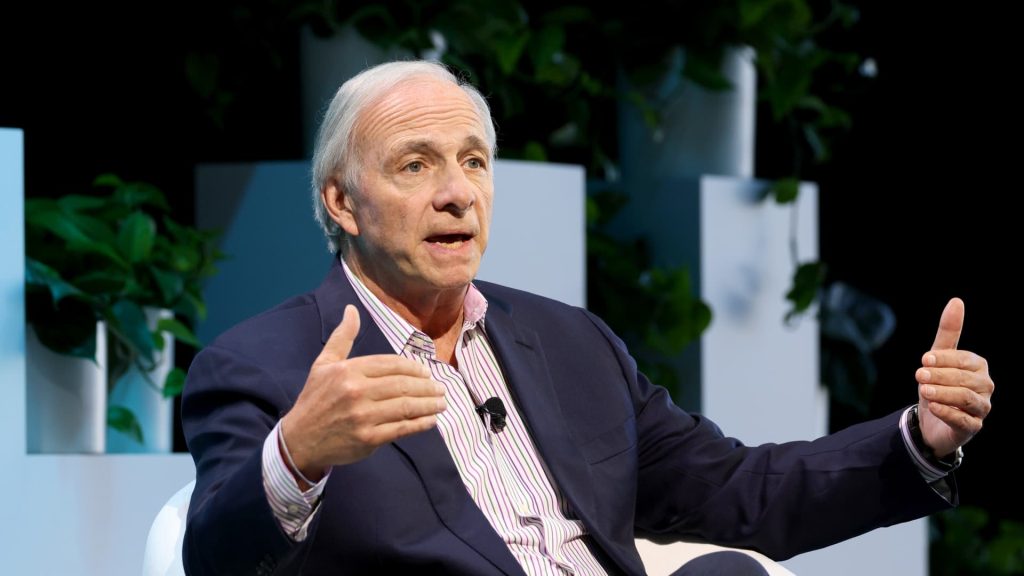NEW YORK, NEW YORK – MAY 22: Ray Dalio, Founder and CIO Mentor, Bridgewater Associates speaks onstage during The Wall Street Journal’s 2024 The Future Of Everything Festival at Spring Studios on May 22, 2024 in New York City.
Dia Dipasupil | Getty Images Entertainment | Getty Images
Bridgewater founder Ray Dalio said Friday that gold and non-fiat currencies will become stronger stores of value as major currencies face devaluation risks amid mounting debt pressures globally.
Speaking at the FutureChina Global Forum 2025, Dalio warned that the excessive spending and spiraling debt by the U.S. government has become “unsustainable” and that the world’s largest economy is facing a major fiscal crisis that will put its monetary order at risk.
He added that all currencies risk losing their appeal as repositories of wealth when global governments appear reluctant to rein in excessive spending and borrowing — making gold and non-fiat currencies more viable stores of value.
Dalio urged investors to diversify their assets with around 10% of their portfolio in gold.
Ng Kok Song, founding partner and chairman of Avanda Investment Management, said on the same panel that the unsustainability of the U.S. debt “has reached the tipping point. We do not know when the crisis is going to unfold.”
He also noted that the fiscal risks were not unique to the U.S. but also seen in countries like France, Japan and China.
While the greenback has depreciated against other major currencies this year, with the dollar index tumbling over 10%, those currencies have also weakened in value relative to gold, Dalio said, noting that gold has become the second largest reserve currency globally.
Supply-demand imbalance
After years of “over-spending,” U.S. government has a swelling debt that is six times the amount of money that it has taken in, Dalio said.
He estimated, without giving a timeline, that the government needs to sell an additional $12 trillion in debt to be able to cover the $2 trillion deficit, $1 trillion of interest payment and roll-over of $9 trillion in maturing borrowings.
But, “the market in the world does not have that same sort of demand and that creates a supply-demand imbalance,” he said.
Dalio added that he proposed to lawmakers in Washington to reduce the fiscal deficit to 3% of its gross domestic product, but politicans on both sides of the aisle have been reluctant to balance the debt level. U.S. President Donald Trump’s massive tax-and-spending bill is expected to add $3.4 trillion to the national debt over the next decade.
The U.S. dollar will, however, retain its dominant use as a “medium of exchange,” Dalio said, although the rising role of Chinese currency in global trade will take some shine off the dollar.


